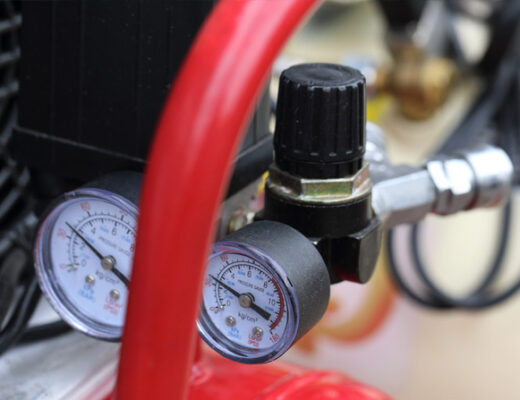The power from an electric motor, diesel engine, or other engine is converted into the potential energy contained in compressed air by an air compressor, which is a pneumatic tool. By employing one of many methods to force more and more air into the container, an air compressor increases the pressure in a storage tank. Air compressor manufacturers in India build their reciprocating air compressors with an automatic shut-off feature that activates when the tank’s pressure rises over the maximum design limit. The compressed air is then kept in the tank until it is needed. The energy stored in the compressed air may be used for a variety of purposes by using the kinetic energy of the air as it is released and the tank depressurizes.
How does an Air Compressor function?
Single-stage, piston-type air compressors are one of the most often used types for home use. They are practical for many activities around the house or workshop. An electric motor or a gasoline engine can move a piston. The air is compressed by the piston and is then sent into a holding tank. As the piston forces in more air, the air pressure rises. When the pressure reaches a specific level, the compressor turns off. When you use the compressed air to run a tool, the compressor restarts to replenish the air pressure.
Why does your air compressor need oil?
Air compressors require constant oil lubrication to minimise friction on the pistons, screws, and other moving parts. Knowing how much oil your air compressor requires and regularly checking your oil level are essential for making sure it’s working properly. Before adding any oil, you should check the manual for your air compressor for instructions on testing and adding oil. How much oil you should add to the sump will be specified in the manual for your specific type of compressor. After reading the manual, you ought to be able to locate the oil sight glass on your compressor.
When should you change the oil of your air compressor?
The frequency of oil changes for your air compressor will depend on the type of compressor you have and how frequently you use it. There will be precise instructions in the machine’s user manual, but as a general rule, the oil should be changed every 100 to 200 hours or every few months. Using a dipstick or oil glass, you may also check the oil level. Drain the oil chamber entirely before replacing the oil in your air compressor. The efficacy of fresh oil can be diminished by contaminated oil. See more advice in our guide to preventative maintenance.
Below are the risks of low oil level in the Air Compressor
- Heat is created when air is compressed, and part of that heat is absorbed by oil. The air compressor may overheat if the oil levels are too low because of increased friction.
- To guarantee clean, compressed air, you should change the air filter on your air compressor. Similar maintenance is required for your air compressor’s dirty or outdated oil. The accumulation of dirt and nanoparticles in the oil happens more quickly the more you use it.
- Ample oil levels are necessary to protect the metal joints and parts of your air compressor from rust, general wear, and corrosion, which can lead to costly repairs.
- When oils are exposed to heat and water over time, they oxidise. Oil loses some of its efficacy when it has degraded. Eventually, the oil stops serving its original function, which might lead to an expensive breakdown.




